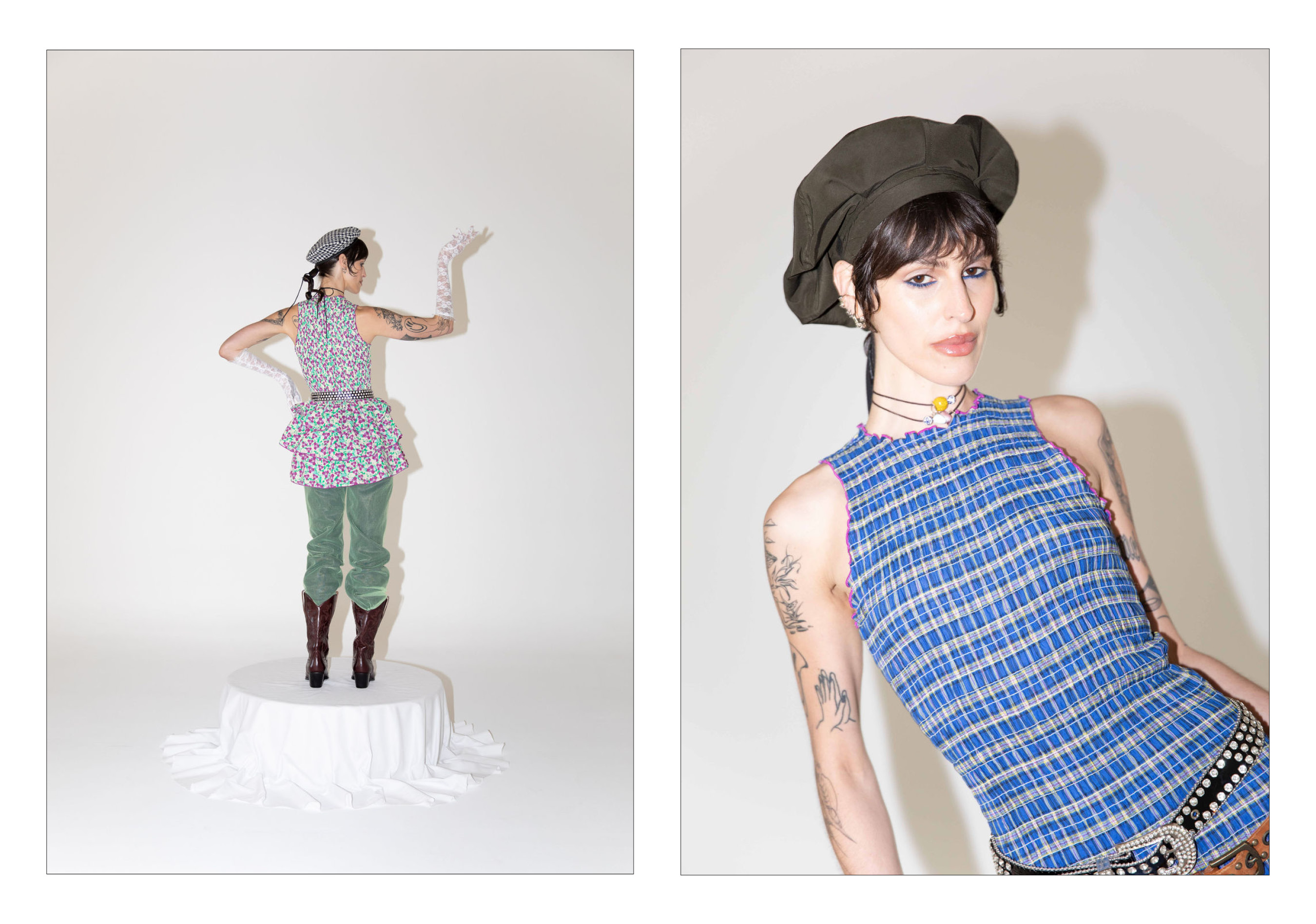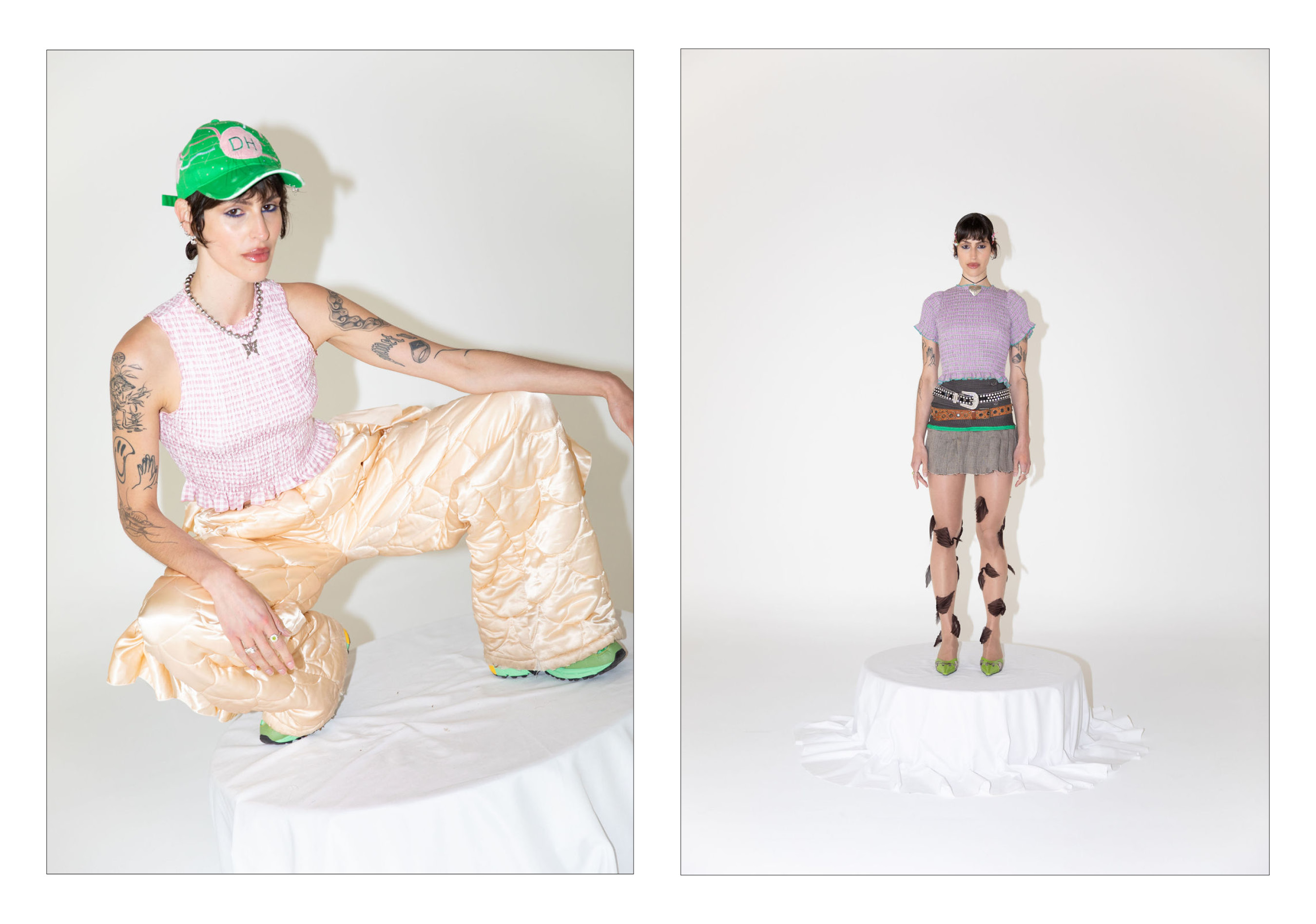0 minute read
Are We in the Post-Trend Age?
Thanks to technological advancements, the trend cycle is the fastest it’s ever been before, and so, distinctive trends are becoming more and more difficult to identify. Writer Ruby Staley explores the relationship between social media and trend turnover, and why we should celebrate the death of the trend.
Published: December 2022
Origin: Australia
We’re in the age of mass consumption and oversaturation of online content.
Thanks to the constant flow of trending moments and online movements, virtually everything has the potential to go viral.
And so, due to this influx of micro-trends popping up every second, the notion of a 'trend' as a clear identifier of cultural importance has lost most of its gravity.
Historically, there have been clear fashion, culture and beauty trends – think the bohemian 70s, the bold 80s, the pared back 90s and the flashy 2000s eras.
Although there have always been outliers over these time periods, an overwhelming style prevailed as the typical trend of each time period.

Although trends still exist now, it’s almost impossible to sign post them. In the age of mass online content, the resurgence of previous trend decades and appearance of new micro trends points to a quickening of the trend cycle.
When previously the trend cycle was said to be 20 years, now, its lucky to last a few months before a trend become en vogue, then promptly runs its course, goes out of fashion and becomes popular again in a matter of years.
We’re currently seeing this with some early Tumblr micro trends like soft grunge and indie sleaze becoming popular again less than 10 years after they originated.
The TikTok Prediction
Fashion analyst and writer Mandy Lee chats extensively on the topic of trends consistently on her TikTok.
Noting that fashion trends have existed forever and aren’t going anywhere, Mandy talks to the way they have changed.
“With more and more consumers conscious of the negative impacts of trends such as the accelerating trend cycle, style confusion, waste and over production, predictable influencer marketing strategy and fast fashion, there seems to be a growing shift towards anti trend,” she said in a recent video.
Image Credit: @oldloserinbrooklyn
“There will come a point where trends are so hard to identify, the cycle will implode, and personal style will reign supreme.”
For some of us who are chronically online, she says that it may feel like everything is back all at once because “aesthetics are becoming more and more niche.”
Consequently, according to Mandy, we may see a rise in “uniformity” like that of Skims or the clean girl aesthetic, or, alternatively, an uprising in personal style across the board.
Too many trends?
When we have an excess of trends on the market at any one time, consumers are forced to make conscious style decisions that are specific to their taste. So, if we ever reach a point where trends mutate so far that there are as many trends as there are consumers – personal style will naturally triumph.
We may never get to that point - and it may be chaos if we do - but in the meantime, many other industry professionals have begun noticing the influx of niche trends.
Australian stylist Simone Farrugia says where previously “certain eras and cultural moments brought about significant movements in fashion that earned a place in history”, today’s trends don’t seem to have that staying power.
“Today trends emerge hard and fast and are gone as quick as you can say ‘Bottega’,” she says.
“We have this absolute overflow of content being pushed at us at a pace that is hard to keep up with… some trends aren’t really even the definition of the word anymore, they are mere ‘blink and you’ll miss it moments.”
Designer and founder of Melbourne based boutique fashion label Apres Studio Meg Wilcher said that thanks to our “access to everything, everywhere all at once” via socials the nature of current trends have been negatively impacted.
“Social media perpetuates the fear we have as humans of not being good, cool, pretty, healthy enough. Brands use trends to play on this via social media to impact the levels in which we consume products,” she said.
RIP Trends
Some fashion researchers like Mandy are calling the current moment in fashion and online culture: the death of the trend - in that there are constantly too many micro trends to recognise any overwhelming trends, and therefore, no clear trend cycle.
A fashion researcher in her own right, Simone as a current stylist said she agrees that unlike previous decades, there’s no real distinctive look.
“I don’t know that I could define what we are now in terms of an image in my mind that speaks to key looks for this era,” she said.
From the standpoint of a local designer, Meg said that to some extent this is true but this moment in fashion also allows for “people to deep dive into self-expression”.
“[It’s an opportunity] to stop following the chaos of the microtrends, the overconsumption and the consistent noise that's created as a by-product of always making and marketing new products,” she said.
The Upsides
As a marketing tool, trends have the capacity to encourage mindless consumption, especially in relation to wasteful and unethical fast fashion, while minimising personal creativity and style.
Considering the potential for some businesses to struggle, for Meg, the death of trends means “less consumption, more consideration, more innovation, more creativity, more diversity, more originality.”
“I think [personal style] would flourish without trends and people would be more creative with reinventing the way items can be worn as a way of expressing self,” she said.

Pushing against societal pressure to fit in, for Simone, a fashion industry void of trends would mean “the freedom to express oneself through fashion in any way you like.”
“I think we will also see a rise in capsule wardrobe dressing and people making conscious choices not to participate in ‘fashion’ so to speak and perhaps express themselves in other ways,” she said.
Although the future is never certain nor promised, I know I’m not alone in advocating for a future full of self-expression and creativity – irrespective of trends. Here’s hoping for the freedom to fully express ourselves through fashion.
Ruby Staley
Share